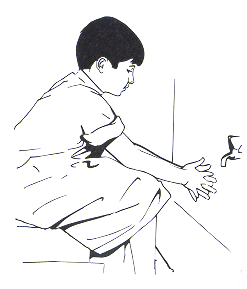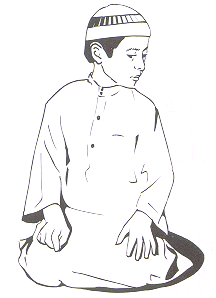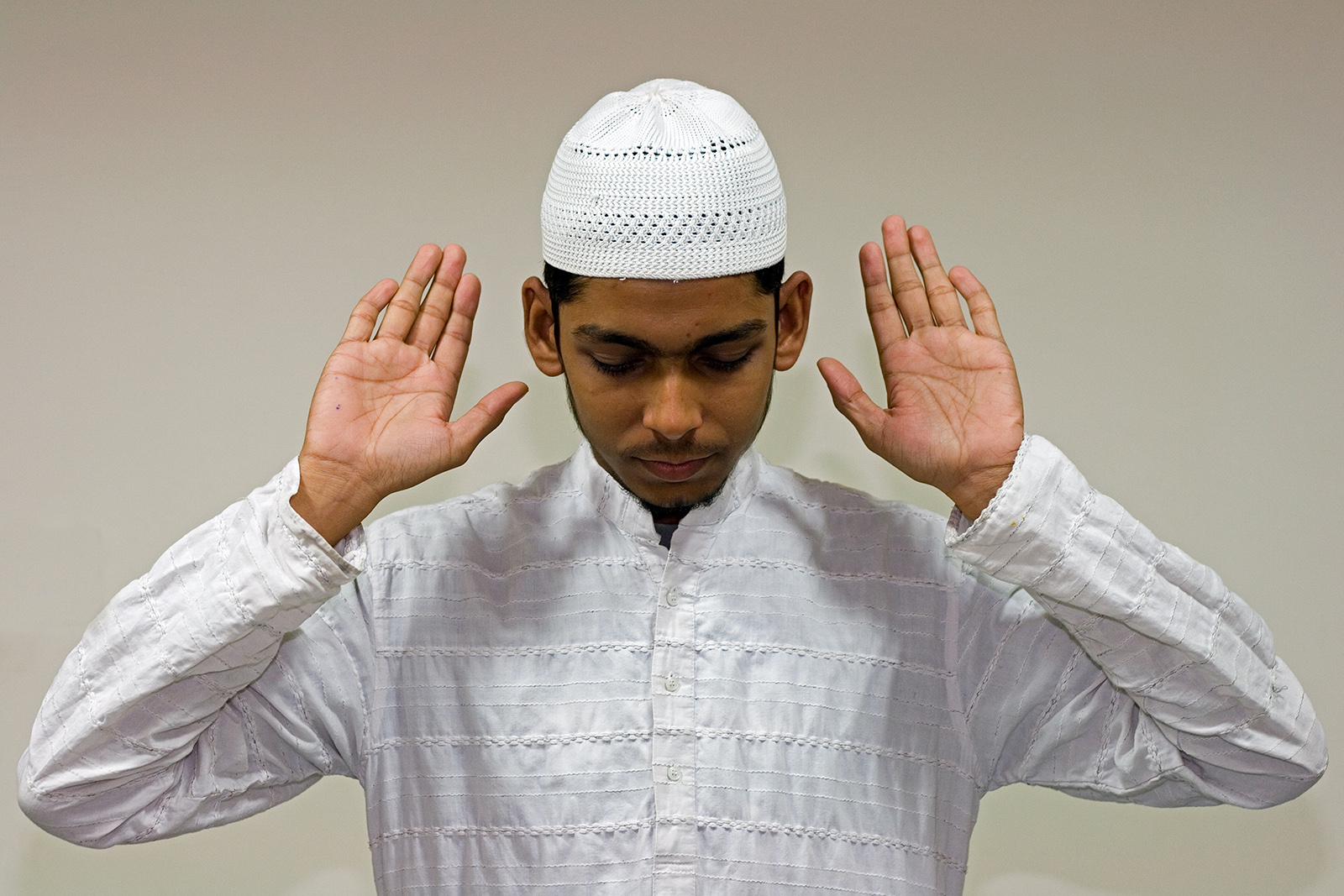How To Pray In Islam Biography
Source:- Google.com.pkScholars agree that keeping the ranks straight is desirable in congregational prayer. Anas relates that the Prophet (peace be upon him) said: "Straighten your ranks, for indeed straightening the ranks is part of prayer." [Sahîh al-Bukhârî and Sahîh Muslim]
This straightens of the ranks applies to both the shoulders and the feet. Regarding the shoulders, Ibn Mas`ûd relates: The Prophet (peace be upon him) used to go by and touch us on the shoulders, saying: "Be in line. Do not differ and cause your hearts to differ…" [Sahîh Muslim]
Regarding the feet, al-Nu`mân b. Bashîr relates: The Prophet (peace be upon him) turned to the people and said three times: "Mind your ranks." Then he said: "I swear by Allah, you will mind your ranks or Allah will divide your hearts."
Al-Nu`mân b. Bashîr then gives us an account of how the worshippers responded to this exhortation. He says: "I saw each man place his shoulder against the next man's shoulder and his ankle against his ankle." [Sunan Abî Dâwûd]
Also, Anas b. Mâlik relates that the Prophet (peace be upon him) said: "Mind your ranks. I can see you behind my back."
Anas likewise gives us an account of how the worshippers responded to this exhortation. He says: "We used to place our ankles to the ankles of these standing next to us." [Sahîh al-Bukhârî]
However, with respect to elderly and infirm worshippers who pray in a sitting position – whether they are seated in chairs or on the floor – it is not possible for them to line up both their feet and their shoulders. The question, then, is: which criterion must be used to determine their keeping in line with their fellow worshippers?
The answer is that seated worshippers should keep their shoulders in line with the ranks and not worry about their feet. The reasons for this are as follows:
1. When a seated worshipper lines up his feet with the rest of the worshippers in the rank, this paces most of his body behind the rank. The body of the seated worshipper is actually situated between two ranks, neither fully in the first nor in the second, and this creates a clear disturbance in the congregation.
2. The practice of the Prophet (peace be upon him) indicates giving priority to the shoulders. As we saw in the hadîth narrated by Ibn Mas`ûd, the Prophet used to pass down the line of worshippers and straighten them out by touching them on the shoulders. Also, in his verbal commands, he specifically mentioned the shoulders. This shows that keeping the shoulders in line is the paramount concern when straightening the ranks for prayer.
3. The lower part of the body follows the upper part. In people's everyday dealings – when they line up for any reason and when they meet with each other – they usually focus on the upper body. The lower body follows suit.
In summary, the following general rule can be applied:
Worshippers should line up both their shoulders and feet if they can. If it is impossible to do both, then the shoulders take precedence. If, for some reason, it is altogether impossible for a worshipper to keep his shoulders in line with the other worshippers – as would be the case with a hunchback – then that person should keep his feet in line with the rest of the worshippers.
If the imâm offers any taslîm and the latecomer suspects that the imâm is going to prostrate for forgetfulness (sahw), the latecomer to the prayer should wait a moment without offering the taslîm. Then, if the imâm prostrates for forgetfulness, the latecomer can prostrate with him.
However, if the latecomer, after the imâm’s taslîm, has already stood to compete his prayer, he should not sit back down to follow the imâm in the prostration. Instead, the latecomer should finish his prayer on his own and offer the missed prostration of forgetfulness at the end of his prayer.
The latecomer should preferably offer his prostration of forgetfulness in the same manner that the imâm had offered it.
This means that if the imâm had offered the prostration of forgetfulness after the taslîm, then the latecomer should do the same at the end of his own prayer.
The latecomer should certainly not offer the taslîm along with the imâm when he has not finished his own prayer. The taslîm is the means by which a worshipper emerges from the state of prayer, and it should only be offered at the very end of one's prayer.
How To Pray In Islam Islam Facts For Kids Pictures About Religion Wikipedia And History And Beliefs Worksheet On Women Today And Information Images Wallpapers

How To Pray In Islam Islam Facts For Kids Pictures About Religion Wikipedia And History And Beliefs Worksheet On Women Today And Information Images Wallpapers

How To Pray In Islam Islam Facts For Kids Pictures About Religion Wikipedia And History And Beliefs Worksheet On Women Today And Information Images Wallpapers

How To Pray In Islam Islam Facts For Kids Pictures About Religion Wikipedia And History And Beliefs Worksheet On Women Today And Information Images Wallpapers

How To Pray In Islam Islam Facts For Kids Pictures About Religion Wikipedia And History And Beliefs Worksheet On Women Today And Information Images Wallpapers

How To Pray In Islam Islam Facts For Kids Pictures About Religion Wikipedia And History And Beliefs Worksheet On Women Today And Information Images Wallpapers

How To Pray In Islam Islam Facts For Kids Pictures About Religion Wikipedia And History And Beliefs Worksheet On Women Today And Information Images Wallpapers

How To Pray In Islam Islam Facts For Kids Pictures About Religion Wikipedia And History And Beliefs Worksheet On Women Today And Information Images Wallpapers

How To Pray In Islam Islam Facts For Kids Pictures About Religion Wikipedia And History And Beliefs Worksheet On Women Today And Information Images Wallpapers

How To Pray In Islam Islam Facts For Kids Pictures About Religion Wikipedia And History And Beliefs Worksheet On Women Today And Information Images Wallpapers

How To Pray In Islam Islam Facts For Kids Pictures About Religion Wikipedia And History And Beliefs Worksheet On Women Today And Information Images Wallpapers

How To Pray In Islam Islam Facts For Kids Pictures About Religion Wikipedia And History And Beliefs Worksheet On Women Today And Information Images Wallpapers

How To Pray In Islam Islam Facts For Kids Pictures About Religion Wikipedia And History And Beliefs Worksheet On Women Today And Information Images Wallpapers

How To Pray In Islam Islam Facts For Kids Pictures About Religion Wikipedia And History And Beliefs Worksheet On Women Today And Information Images Wallpapers

How To Pray In Islam Islam Facts For Kids Pictures About Religion Wikipedia And History And Beliefs Worksheet On Women Today And Information Images Wallpapers

How To Pray In Islam Islam Facts For Kids Pictures About Religion Wikipedia And History And Beliefs Worksheet On Women Today And Information Images Wallpapers

No comments:
Post a Comment